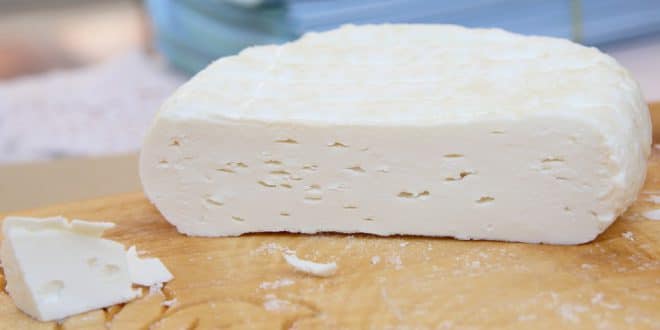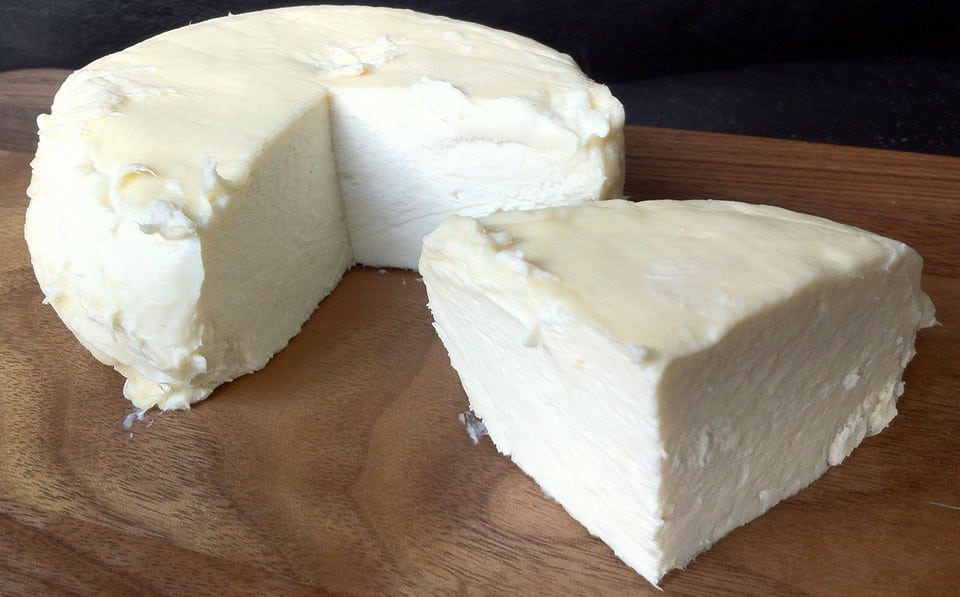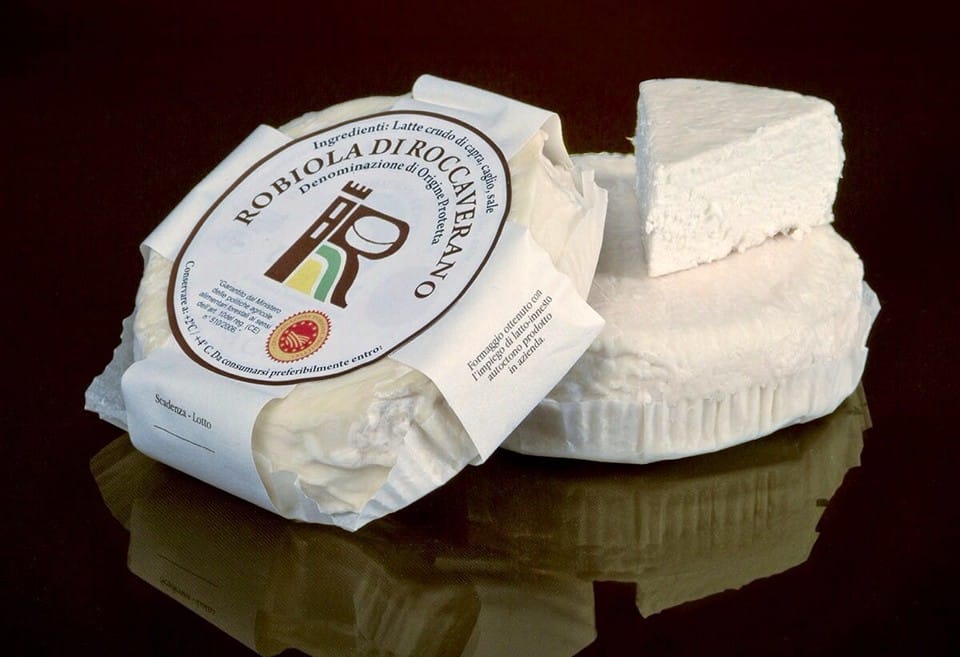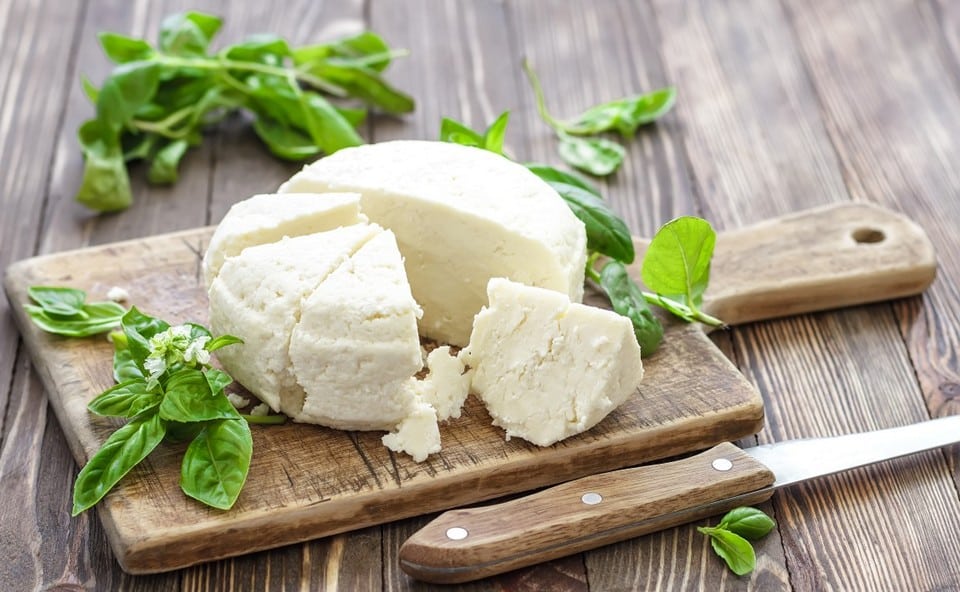“Robiola!” proudly exclaims the Italian. “Never heard of it…” anyone would respond, scratching their head. And it’s not surprising. Non progredi est regredi, dear readers. And in order not to embarrass ourselves in front of our Italian brethren, let us briefly immerse ourselves in the world of comprehensive information about this overseas product.
Page Contents
History of Production
The history of Robiola cheese production has ancient roots. It was first made during the Celtic era in the Langhe province. Later, in the 1st century AD, Pliny the Elder and then Pantaleone (3rd-4th century) highly praised the quality of this product.
There are two versions regarding the origin of the cheese’s name:
- According to the majority of historians, its roots lie in the Latin language. The Celts called it “rubeus,” which means “ruby,” due to the reddish hue the rind acquires during ripening.
- According to other sources, it was named after the Italian town of Robbio Lomellina, where it was first produced.
In a manuscript by the priest Pistone from 1899, the history of Robiola from 960 to 1860 is described. Among all the historical information, there is one fact that highlights the reverence for this cheese over many decades. This is evidenced by the fact that the city of Roccaverano in Piedmont held five annual “Robiola” fairs. The best cheese was exported. Even in those distant times, it captivated connoisseurs not only in Italy but also in France.
Vittorio Emanuele II of Savoy, the King of the Kingdom of Sardinia, enjoyed hunting in the southern regions of Langhe. But His Majesty particularly liked stopping at farms to taste Robiola cheese made by peasants.
2 July 1996, the cheese “Robiola di Roccaverano” was included in the list of products with a protected designation of origin (DOP).
Territory and Production Techniques
The cheese is produced in many provinces of Italy, but the production of DOP Robiola is legislatively regulated. It is made throughout the year in two provinces of Piedmont: Asti and Alessandria.
It is the only DOP cheese made from goat’s milk taken from specific breeds of animals (Roccaverano and Camosciata Alpina). The addition of cow’s and sheep’s milk (Piemontese and Bruno Alpina breeds) is allowed, but not exceeding 50% of the total mass. However, some farmers still continue to produce cheese according to centuries-old tradition, using only goat’s milk. The animals are exclusively fed on pastures and, during the cold season, on cut hay. The use of GMO feed is not allowed.
At all stages of production, the use of pigments, dyes, and flavorings is strictly prohibited. To coagulate the milk, dairy cultures and animal rennet are added, and the mixture is left to rest for 8-36 hours (depending on the environmental conditions).
The curd is cut into pieces and carefully transferred to perforated molds to drain the whey. The process takes about 48 hours. During this time, the molds are periodically flipped to ensure maximum drainage of excess liquid.
At the end of the molding process, the cheese is dry salted and placed in special rooms with a temperature of 15-20 degrees for aging.
From the fourth day of aging, fresh Robiola cheese can be sold. By the 10th day, the flavor of Robiola becomes more refined, and by the 30th day, it reaches its maximum dryness.
Robiola cheese is produced in the form of cylinders with a diameter of 10-13 cm and a height of 2-4 cm. The weight of such a wheel ranges from 200 to 400 g.
- Fresh Robiola cheese, aged for 4 days, has a white rind or no rind at all. The texture is soft and the color is ivory.
- After 10 days of aging, the cheese becomes firm, with a straw-yellow or slightly reddish color and a thin layer of white mold.
- Matured Robiola cheese has a brownish-red dry surface, a pale yellow body, and a firmer texture.
How to Eat and How to Replace Robiola in Recipes
To enjoy Robiola cheese, you can savor it on its own or use it as an ingredient in various recipes. Its flavor is delicate, milky, with a subtle acidity, and hints of nuts and meadow herbs. It’s worth noting that the taste characteristics of the cheese depend on the type of milk used in its production.
For culinary enthusiasts, Robiola cheese serves as a constant source of inspiration and creativity. It is suitable for both hot and cold dishes.
You can enjoy Robiola cheese on its own, paired with marmalade, ginger, fresh fruits, nuts, and raisins. It can also be spread on bread along with green onions. To enhance its flavor, you can drizzle it with honey or sprinkle mustard seeds on top.
Robiola cheese can be served on a platter with a selection of cured meats, used as a filling for baked goods, braised, or baked with vegetables.
Cheese pairs perfectly with fruity white wines. Fresh Robiola goes well with Chardonnay, especially Chardonnay Longé and Roero Arneis. A mature Robiola is a suitable appetizer when paired with Verduno Pelaverga and Dolcetto di Dogliani.
Pasta with Robiola
Here’s a remarkably healthy recipe for pasta with Robiola:
- Dice 300g of zucchini, 300g of carrots, 200g of tomatoes, and half an onion. Place them in a pot with a little vegetable oil and sauté over medium heat for 15 minutes, stirring occasionally.
- Cook 320g of whole-grain pasta, drain it, and add it to the pot with the vegetables.
- Add 100g of diced Robiola and simmer for an additional minute.
The result is a dish that serves 4 people and aligns with the parameters of a healthy Mediterranean diet.
Robiola can be substituted with Adyghe cheese or feta cheese (for meat and vegetable dishes) or cottage cheese with large curds (for baking and fruit salads).
Caloric Content and Benefits
Like any cheese, Robiola contains a sufficient amount of calories to not be considered a low-calorie everyday dish. Every 100g of the product contains approximately:
- 338 kcal;
- 20g of protein;
- 27.7g of fat;
- 2.3g of carbohydrates;
- 90mg of cholesterol.
The fact that Robiola is made from goat’s milk gives it an advantage in terms of protein content compared to other varieties. The proteins have high biological value as they are a source of essential amino acids for humans.
The presence of fats indicates the need for moderate consumption of the cheese. Excessive intake of saturated lipids in the diet increases the risk of developing serious cardiovascular diseases.
Cheese is a source of:
- Vitamin A, which supports healthy vision.
- B vitamins, which contribute to skin protection, central nervous system maintenance, and have a positive impact on memory and normal sleep.
- Calcium and phosphorus, which are essential components of bones and teeth, participate in metabolism regulation, and maintain the acid-base balance of blood and other biological fluids in the body.
If you adhere to the principles of healthy eating, according to medical recommendations, it is necessary to include cheese and dairy products in your daily diet.
Price of Robiola in Italy
Robiola belongs to the category of premium cheeses. You can buy it in Italy at a price ranging from 7 to 10.5 euros for 350 grams.
With this, the loading of information about Robiola into your mind is complete. Now you can proudly head to Italy and boast your knowledge about cheese. Eat creatively and remember, “Robiola is not like potatoes – you won’t throw it out the window!”
 Italy for me From Italy with love
Italy for me From Italy with love






